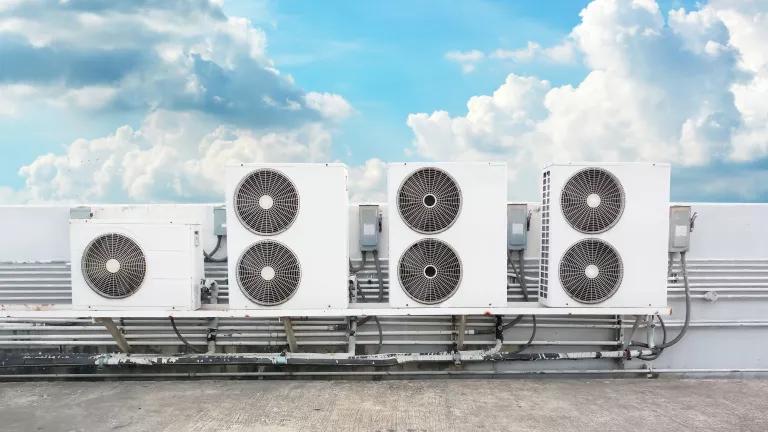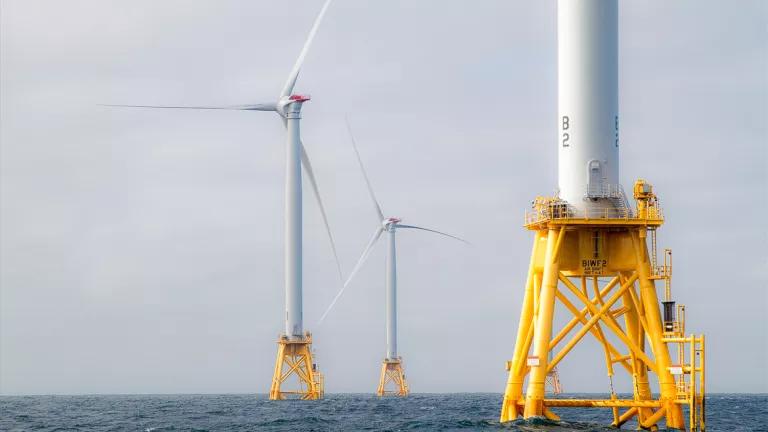World Ozone Day: What The Ozone Treaty Does for Climate
The Montreal Protocol does more than save the ozone layer -- it's a double bonus for climate protection. Next stop: Ratifying the Kigali HFC Phasedown.

Ozone hole Sept. 12, 2022 NASA image
Time to celebrate World Ozone Day again, on September 16th. That’s the anniversary of the signing of the Montreal Protocol, the world’s most successful environmental treaty, in 1987.
The Montreal Protocol turns 35 this year. And what a track record. It's a treaty joined by every country on the planet. It has virtually eliminated chlorofluorocarbons (CFCs) and dozens of other ozone-destroying chemicals worldwide, protecting the fragile stratospheric ozone layer we rely on to screen out dangerous ultraviolet radiation. That is saving millions of lives and avoiding untold harm to agriculture and other vital natural systems.
Originally intended to safeguard the ozone layer, the Montreal Protocol is also one of the biggest steps we've taken to reduce the speed of climate change.
You can visualize what NASA scientist Paul Newman calls “the world avoided” here:
And you can see this success story well told in a PBS documentary: "Ozone Hole: How We Saved the Planet."
Which is not to say we’re out of the woods yet. This time of year we also witness the most glaring sign of the damage done: the gigantic ozone hole over Antarctica—pictured below. Fortunately, as atmospheric CFC levels slowly decline, the ozone layer is recovering. But it will take a while; the ozone hole is not projected to fully disappear until 2070.
The Montreal Protocol has done more than save the ozone layer. It has also provided a huge climate protection bonus. Actually, a double climate bonus.
In addition to hurting the ozone layer, CFCs were extremely potent heat-trapping greenhouse gases. Replacing them has slowed climate change by at least a decade. Had we not acted, the world could have suffered this year’s extreme weather 10 years ago. We’d already be suffering even more severe droughts, wildfires, floods, and storms.
But there’s more. A paper in Nature last year calculated the damage to forests and other vegetation that would have been caused by additional UV radiation had we not controlled CFCs. It finds that damaged plant life would have been far less able to pull carbon dioxide out of the air over this century, leaving an additional 115-235 parts per million CO2 in the atmosphere and causing an additional warming of 0.5-1 degree Celsius.
Back in 1987 we knew ozone-destroying CFCs were also powerful greenhouse gases, but the climate benefit turned out to be even bigger than we could have guessed!
It is challenging enough to keep overall warming below 1.5 or even 2 degrees Celsius. Imagine how much harder it would have been without the Montreal Protocol.
So on World Ozone Day—formally, the United Nations International Day for the Preservation of the Ozone Layer—there is a lot of climate protection to be thankful for.
But there’s still a lot to do. Although production of ozone-depleting chemicals has almost ceased, there are still enormous amounts inside existing air conditioners, refrigerators, and other products. We must do more to keep those chemicals from leaking into the air when those appliances malfunction, when they are repaired, and when they are discarded.
NRDC and partner organizations will soon issue a new report on the climate and ozone protection gains possible through better leak prevention and refrigerant recovery. Bottom line is the potential to avoid refrigerant leakage equivalent to 90 billion tons of CO2 through 2100.
Through the 2016 Kigali Amendment, the Montreal Protocol parties took on climate protection directly by agreeing to phase down hydrofluorocarbons (HFCs). HFCs were an initial improvement over CFCs because they don’t deplete ozone and are less damaging to the climate. But HFCs are still very potent climate pollutants—less powerful pound for pound than CFCs, but still packing 500-2000 times the wallop as an equal amount of CO2. Now we can do better, with a suite of HFC replacements—ranging from new fluorocarbons to hydrocarbons to CO2 itself—that are both energy efficient and have far lower warming impact if they escape to the air.
As air conditioning and refrigeration markets boom around the world (driven partly by climate change itself), 137 countries have already ratified the Kigali Amendment and begun implementing the HFC phase-down. That includes China, India, Europe, Japan, and nearly all other OECD countries and major economies.
China has published domestic regulations and India is developing a national implementation strategy. In a new paper in Environmental Research Letters, NRDC experts and colleagues examine different phase-down scenarios for India. The study finds a clear path to phasing down HFCs in India while expanding access to cooling, and highlights how India could cut cumulative HFC demand by the equivalent of 337 million tons of CO2 between 2025 and 2050, exceeding its obligations under the Kigali Amendment.
The U.S., which was a prime mover behind Kigali, has already started implementing the HFC phase-down under the bipartisan American Innovation and Manufacturing Act enacted in 2020. The AIM Act was supported by a coalition running from NRDC to the U.S. Chamber of Commerce and it will drive the HFC transition in the U.S. at least as fast as the Kigali schedule.
The Biden administration has moved fast to implement the new law. Last year, the Environmental Protection Agency issued regulations kicking off the phase-down of HFC production and imports. EPA granted a raft of petitions filed by environmental organizations, industries, and states to restrict use of HFCs in dozens of products where climate-friendlier alternatives are already available. Proposed rules are due next month. And NRDC secured EPA's agreement to propose requirements next year to recover and reuse HFCs that otherwise would leak away.
But we have to catch up on ratifying the Kigali Amendment. Last year President Biden sent it to the Senate for advice and consent to ratification, as required by the Constitution. The Senate Foreign Relations Committee gave its approval almost unanimously in May. With Kigali backed by both business and environmental supporters, all that's needed is to bring it to the floor, where more than 67 Democratic and Republican Senators are ready to vote yes. Hopefully, that will happen by the end of October, when the parties will gather in Montreal for their 35th anniversary meeting.
Progress under the Montreal Protocol is a model for broader climate action, as I have written here: We Saved the Ozone Layer. We Can Save the Climate. Now that Congress has passed and President Biden has signed the landmark Inflation Reduction Act, it's time for the U.S. to zoom on clean energy and climate protection.
Not a bad place to be on World Ozone Day 2022.



